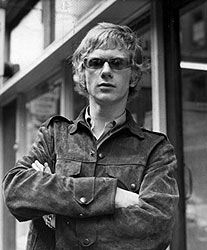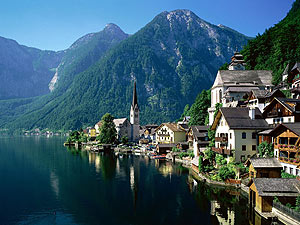Images Of Peter: Finding Peter Godwin, Part Two
Published on May 30th, 2010 in: Interviews, Music |Popshifter: It’s been a while since you made your first forays into constructing music sonically, and music production. What things have changed for you since your first days in this role (i.e., production, technology, etc.)?
Peter Godwin: The first recording studio I ever worked in was Air London. Air belonged to George Martin—the legendary Beatles’ producer of course—and John Burgess. I was in a band called “Children” (originally we were “Crystal Ship” from The Doors’ song!) and we recorded a song of mine called “Lady Lilac,” which I sang lead on while I strummed a guitar.

Andrew Loog Oldham
My first studio experience was pretty cool. In a way my second was even cooler. We did some early recordings of what would become re-recorded as the first Metro album, this time at Olympic Studios, also in London. This time the producer was the guy who discovered, produced, and managed The Rolling Stones—when he was 19! And all through that first Golden Age of their music. “Satisfaction,” “Let’s Spend The Night Together,” stuff like that. Andrew Loog Oldham.
He is one of the great legends of the music business and his autobiographies Stoned and 2Stoned are the best on the ’60s you will ever read. As a teen this guy worked for Vidal Sassoon, Mary Quant, The Beatles. . . that was even before he met the Stones. And at 21 he started one of the first UK indie labels, Immediate Records. Duncan Browne had been signed to Immediate and that was the connection.
When we recorded the version of the first Metro album that was released, it was in another well-known studio of the time, Chipping Norton. Duran Duran later recorded their first album here. This studio was in an Oxfordshire village of that name and it was quite common to take your band and disappear into the countryside until you finished the album. A lot of people did that.
That album was laid down pretty quickly. We didn’t have a bass player or a drummer, so we brought in Simon Phillips on drums and John Giblin on bass. Simon was just 19. He went on to play with The Who, Mick Jagger, Brian Eno. . . well the list is endless. John Giblin also went on to play with Paul McCartney, Roberta Flack and Simple Minds and many others. . . and work with George Martin.
So we had a pretty amazing rhythm section and I think we laid down all the backing tracks live in about five days, with no rehearsal beforehand. And that included several other tracks that didn’t make it onto the album—”Planet Earth” was one of those, which Duncan recorded solo later on, on The Wild Places. (Our song, not the later Duran Duran song that became their first single).
So there was a lot of momentum to making that album. I seem to remember that most of the lead vocals were done in a day.
The irony is that my latest band Nuevo records in a different way, but it’s still fast, very instinctive. You still end up playing, singing, doing the same things. . .
Along the way, different technologies and instruments have inspired me to create the atmosphere for a song.
A certain sound on the Roland Jupiter 4 synth was the first seed of “Torch Songs For The Heroine.” But later I ended up adding cimbalom, santur, and zither, evoking a kind of romanticism with echoes of Eastern Europe and even the Middle East.

On the Nuevo album, “Milonga Moon” was originally written on Spanish guitar and laid down with just Spanish guitar over a simple drum loop. Then I played some piano accordion and it became something else; then Johnson added synths and Ibizan grooves and percussion and it evolved again. . .
The processes in the studio are almost always lateral and intuitive—whether it’s the mystery of a musician you’ve never played with—or experimenting with a new instrument, like the Moog I played around with on the first Metro album—or an old instrument you haven’t played for years—like the accordion on “Namaste” and “Milonga Moon”—which I learnt to play from my father at seven, but only ever recorded myself playing recently with Nuevo.
Sometimes, it will be another unknown like reuniting with a musician you know well, but in a new context after time has passed. Sean Lyons was—and is!—an amazingly gifted guitar player who was in both line-ups of Metro. Later on, I asked him to play on some tracks on Correspondence, which we recorded in Georg Kajanus’ home studio. So Sean added his magic to tracks like “Baby’s In The Mountains,” which was not recorded with live drums and a live band, as Metro had been. We programmed the drums and worked up from there. But Sean’s totally funky rhythm riffing on “Baby’s” is as cool as anything he did with Metro, a lot of which was recorded live with a live rhythm section.
Click here to read more from Peter Godwin on. . .
Music Video Influences
Maturing inspirations
Poetry and Collaboration
Artistic suffocation
Chemistry and Alchemy
Old souls
Catharsis
Changes
Transcending technology
Everything Is Possible
Time limit is exhausted. Please reload the CAPTCHA.